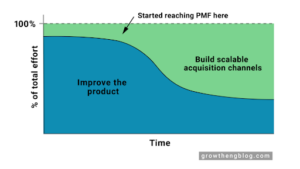Business intelligence (BI) tools help users analyze and visualize data. They can be invaluable for tracking performance against key metrics and informing decisions, as well as sharing information with leaders in your organization.

There are a number of great tools on the market, including Metabase, which is used by many Mozart Data customers.
BI Tools Work Best When Connected to a Modern Data Stack
While BI tools are incredibly useful, they have limitations when they aren’t paired with other data tools.
First, BI software isn’t designed to store all your data — that’s the job of a data warehouse. A warehouse allows you to not just store, but organize, your data, so your team is prepared to analyze data from multiple sources in your BI tool.
BI tools are great at pulling and analyzing data from a single source, like your data warehouse. But, they aren’t designed to combine data from multiple sources or prepare data for analysis, particularly larger datasets. Raw data is often messy data. It contains duplicates, missing values, and information in multiple formats. This data becomes reliable and easier to analyze once it’s cleaned and transformed. If these steps are skipped, the outputs from your BI tool aren’t reliable.
This is where the modern data stack comes into play. Data can be centralized in your data warehouse, transformed and organized, and refreshed on an automated schedule that suits your specific needs. Automation can then feed this prepared data into a BI tool.
This process is also valuable if varying levels of permissions are needed for BI tool users. One of the most common examples is excluding personal identifiable information (PII) from records when not needed.
With a modern data stack, there’s no risk of someone accidentally editing or deleting original source data while working within the BI tool. These guardrails allow less experienced or technical BI tool users to feel empowered and secure in their abilities when they work with data.
How to Connect Mozart Data and Metabase
Mozart Data provides you with the ability to quickly spin up a modern data stack and start centralizing and organizing their data. This also prepares you to use a BI tool, like Metabase.
Getting set up is fast and easy:
-
Sign in to Mozart and connect your Metabase account to your Snowflake warehouse.
That’s it — once you’re connected, the tables in your warehouse will populate in your Metabase account and you’re ready to start exploring your data and building reports.
Using Metabase
Metabase is a simple, yet robust, analytics tool. There are more than 15 built-in visualizations that make it easy to create dashboards, with the option to automate these once they’re set up.
You can also manipulate data to clean and organize it for analysis — either with their SQL editor, or their no-code tools. While we heavily recommend relying on the data transformation tools in Mozart’s platform to consistently clean and organize data for analysis and ensure everyone’s working with the same data, this can be useful for one-off projects. It can also be useful for developing practical data transformation skills, which we’ll touch on later in this blog.
Metabase’s no-code tools are particularly useful for less technically experienced teams who still need to perform analysis. These no-code features allow you to:
-
Drag data from your tables in your Snowflake data warehouse into new reports.
-
Intuitively sort, filter, and summarize results.
-
Join and aggregate data (typically a difficult task without SQL coding).
Sharing results is easy. Aside from dashboards, Metabase supports embedding reports and visualizations in other files and presentations, so you can get data to the people who need it, regardless of whether or not they’re adept at working with data directly.
Bonus: Learn Some SQL
Data transformation tools are built on SQL editors. Using code to clean and organize data may sound intimidating, but it’s actually a relatively simple process. There are lots of great resources to help you learn this incredibly powerful skill set. Metabase is one such tool.
With Metabase, you can see the SQL that’s operating behind the scenes of their no-code features, such as when you build a report or remove information you don’t want from a table. The way the SQL query is written might not always be perfectly efficient, but it’s an easy way to start learning SQL that’s useful for your team, not just abstract exercises in an online course.
You can copy the SQL query to build a transform table right in Mozart’s transformation tool. That way, you and your team can repeatedly use the same query and build on it as your business logic evolves.
If you need help choosing a business intelligence tool, we’re happy to help you pick one that fits your organization’s needs. Learn more about what you can do with a modern data stack here.


